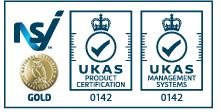
Different types of emergency lighting are important because it is imperative that you provide sufficient illumination within your building. The right lighting ensures the safety the safety of those within the building. It will also enable occupants to exit the building safely in case of an emergency.
There are different reasons that lighting within your building could fail and emergency lighting could be required. For example, there could be a fire or power cut. These things will lead to sudden darkness, and this is something that can be prevented by different types of emergency lighting.
There are five main types of emergency lighting. These are emergency escape lighting, standby lighting, escape route lighting, anti-panic lighting and high-risk task area lighting. Below we look at these 5 types of emergency lighting in more detail.
- Emergency Escape Lighting
Emergency escape lighting provides a sufficient level of illumination so that those within the building can safely evacuate the property. It is important to note that emergency escape lighting is a legal requirement. It makes up part of The Regulatory Reform (Fire Safety) Order 2005 and is a fire safety provision and requirement.
- Standby Lighting
Standby lighting is lighting that enables normal activities to continue when the normal lights go out. While this is not a legal requirement, it can be extremely useful to many businesses. However, some business owners find that it is not a feature of huge importance unless the use of the premises are dependent on lighting.
- Escape Route Lighting
The escape route lighting is the lighting within a building that ensures a means of escape from the building can be identified easily. These are often green signs or arrows that are clear to see if the traditional lighting is not on.
- Area Or Anti-Panic Lighting
Area or Anti-panic lighting is used as part of the escape route lighting system. The anti-panic lighting, also known as area lighting, will provide enough illumination to allow occupants to reach an area of the building where the means of escape can be seen.
- High Risk Task Area Lighting
This type of emergency lighting provides sufficient illumination in areas where high risk tasks take place. The level of illumination will give the operator enough light to turn off machinery, complete a proper shut down or terminate a potentially dangerous process. This can be done quickly and safely before they evacuate the premises.
These are the 5 main types of emergency lighting. If you are concerned about the emergency lighting within your business premises, call our team. We can complete a free emergency lighting review and make recommendations if improvements can be made.

